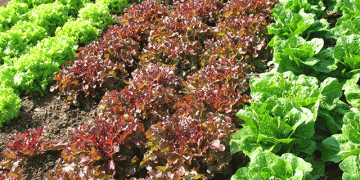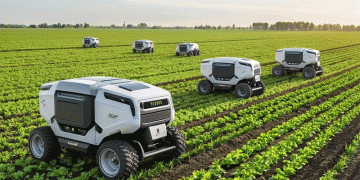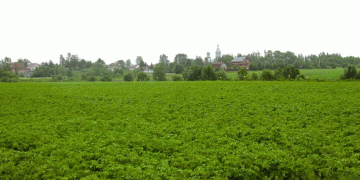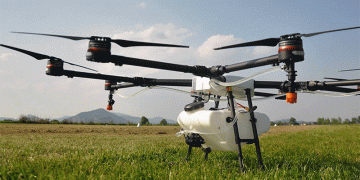Agriculture and renewable energy are often seen as competing land uses, but a groundbreaking pilot project in Thurgau, Switzerland, is challenging that notion. In an innovative approach supported by the EKT-Energiestiftung, researchers and farmers are exploring a system where solar panels and crops coexist on the same plot of land. By installing photovoltaic (PV) panels above fields where berries and fruit are cultivated, the project aims to achieve a dual harvest—electricity from the panels and food from the ground below.
This pilot, along with three other projects, is designed to study the practicality and efficiency of integrating solar energy production with agriculture, a concept known as “agrivoltaics.”
The Concept of Agrivoltaics
Agrivoltaics, or the dual use of land for both agriculture and solar energy generation, is gaining interest worldwide as pressure mounts to increase renewable energy production without sacrificing valuable farmland. In regions like Thurgau, where typically only one crop can be harvested annually due to climate and soil conditions, this method could potentially double the productivity of the land.
Under this system, solar panels are elevated several meters above the crops, allowing sunlight to filter through while generating power. The shade from the panels can also create a more favorable microclimate for crops, particularly during hot summer months, reducing water evaporation and protecting sensitive plants like berries and fruits from excessive heat.
Thurgau’s Pilot: Harnessing Sun and Soil
The pilot project in Thurgau is one of the first in Switzerland to explore agrivoltaics at a significant scale. The region’s agricultural land is mostly used for fruit and berry production, with limited annual harvests. By introducing PV panels above the fields, farmers could soon harvest both electricity and produce, maximizing the land’s output and providing an additional income stream through energy sales.
The project is funded and supported by the EKT-Energiestiftung, which aims to advance innovative energy solutions. In this case, the organization hopes to demonstrate that agrivoltaics could help address both energy and food security challenges by making dual use of limited agricultural land.
Expected Benefits and Challenges
While the potential benefits of the project are clear—more efficient land use, reduced competition between energy and agriculture, and additional income for farmers—the challenges are equally significant.
- Balancing Sunlight for Crops and Energy: The success of agrivoltaics depends on finding the right balance of sunlight for both crop growth and energy production. Too much shading from the solar panels could inhibit plant growth, while too little would reduce the energy generated. Early research suggests that crops like berries, which can benefit from partial shading, may be ideal for this system.
- Cost and Infrastructure: Installing elevated solar panels over fields requires significant initial investment, including costs for the infrastructure needed to support the panels. However, long-term revenue from both crop yields and energy generation could make it a viable economic option for farmers.
- Maintenance and Crop Management: Managing crops beneath solar panels introduces new logistical challenges. Equipment and techniques for irrigation, harvesting, and maintaining crops may need to be adapted to the new environment created by the PV system.
Global Agrivoltaics: A Growing Trend
The Thurgau pilot is part of a larger global movement toward agrivoltaics. Countries like France, Japan, and Germany are also experimenting with similar systems, particularly in regions where space for renewable energy is limited. In many cases, agrivoltaic systems have been shown to increase land productivity by 60% or more, as they allow farmers to continue growing crops while generating clean energy.
In Japan, for example, agrivoltaic farms have been used successfully to grow rice, while in France, vineyards are experimenting with solar panels to protect grapes from sunburn during increasingly hot summers.
The pilot project in Thurgau represents an exciting step forward in combining agriculture with renewable energy generation. If successful, the dual-use system of growing berries and fruits beneath solar panels could become a model for sustainable farming not only in Switzerland but worldwide. By providing both food and energy from the same land, agrivoltaics could offer a solution to some of the most pressing challenges in modern agriculture: land scarcity, climate change, and the need for renewable energy. Farmers, engineers, and scientists will be watching closely as this innovative project unfolds, with hopes that it will prove a viable, scalable model for the future.

































